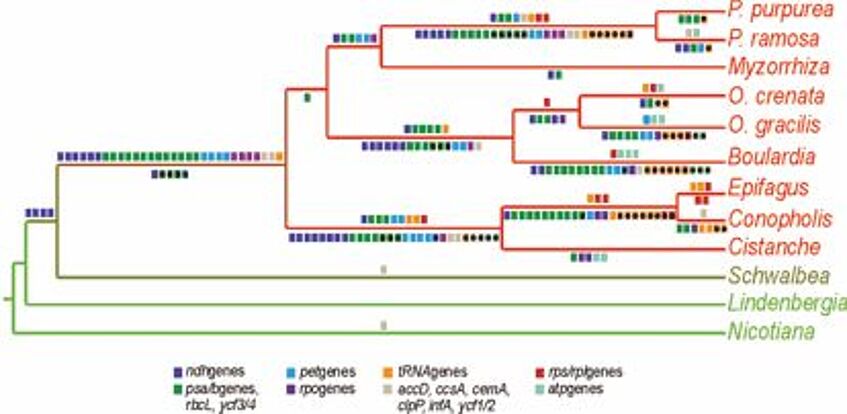WS 2017/18: Structural diversity in plants and fungi: from form to function
Perianth organization of Impatiens (Balsaminaceae): colorful prophylls, sepals or petals?
The first two organs on the floral axis are positioned laterally and are initiated outside/below the other floral organs. They are often colourful and integrated in the floral display, while perianth organs are reduced or lost. Can sequence of organ initiation and organ details help in elucidating organ identity further?
Supervisor: Maria von Balthazar
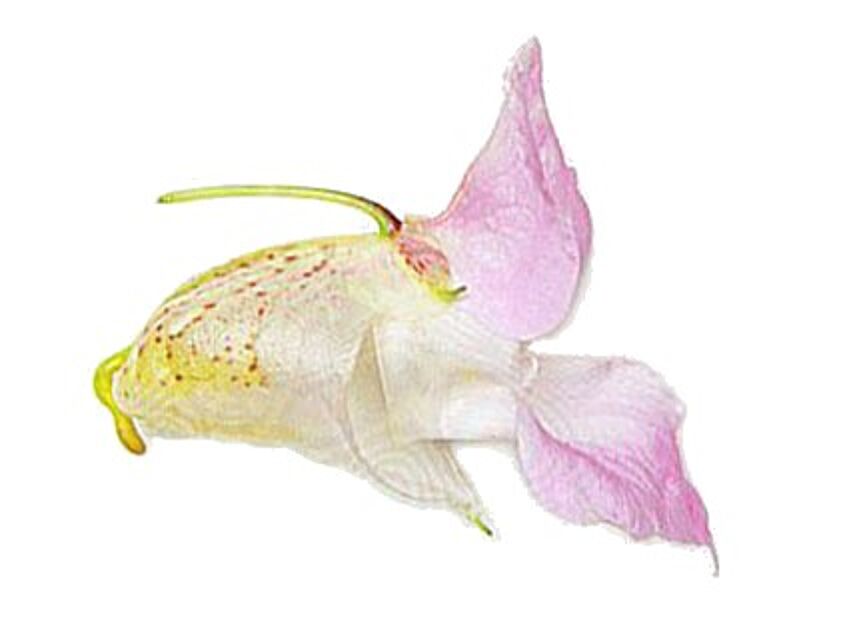
Screening and documentation of Physcomitrella patens cell lines
The aim of this project is to document subcellular structures like microtubules, actin microfilaments or endoplasmatic reticulum in the model moss Physcomitrella patens. To this end, protonemata and leaf cells obtained from tissue culture of six different cell lines will be analysed microscopically using light and fluorescence microscopy. Structural differences to vascular plants will be described.
Supervisor: Ingeborg Lang
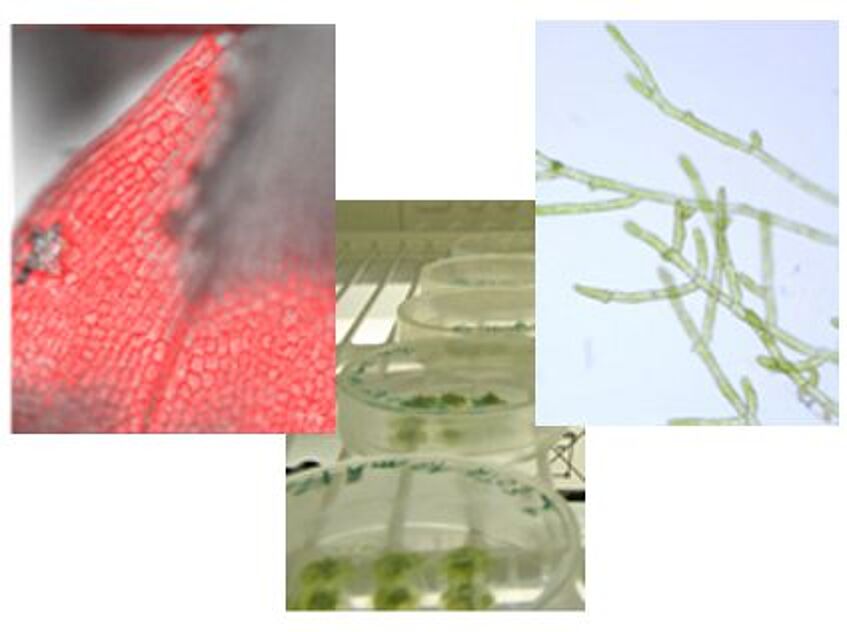
The impact of different pollinators on pollen flow and population genetic diversity in the Neotropics
Birds have been hypothesized to be more efficient and reliable pollinators in tropical montane ecosystems than bees as their foraging activity is less impeded by adverse weather conditions. In our ongoing research on the pollination ecology of the neotropical plant tribe Merianieae (Melastomataceae), we compare bee, hummingbird and passerine pollination systems using population genetic methods (project 1) and field experiments (project 2) to assess the different pollinators’ impact on pollen flow and population genetic diversity. These two topics are embedded within our larger research project and will enable students to gain experience in modern techniques in population genetics (project 1) and pollination biology (project 2).
Supervisors: Agnes Dellinger & Jürg Schönenberger
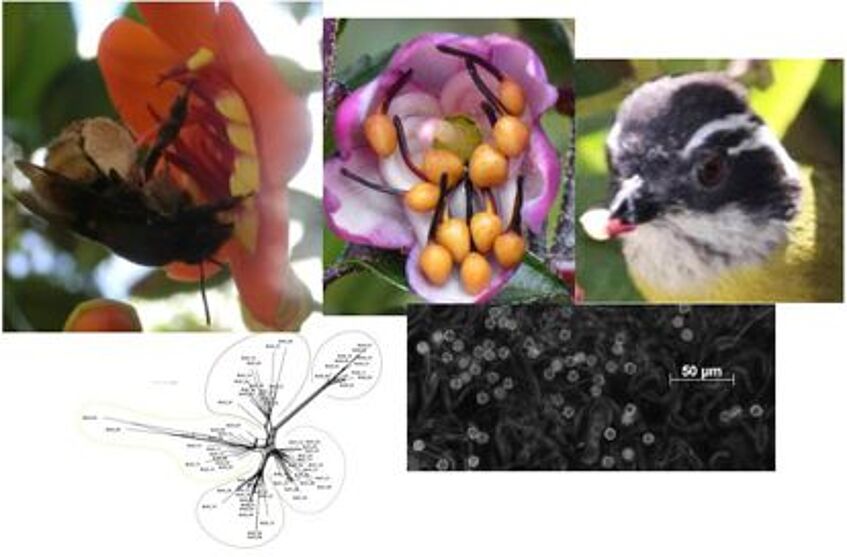
Why do males and females look (or don’t look) so different? - Comparative analysis of sexual dimorphism in dioecious flowering plants
Dioecious plants often exhibit differences between males and females in a wide range of morphological, physiological and life history traits. Despite extensive analysis in animal systems, examination of patterns of sexual dimorphism, both within a species (comparison of many populations) and among species (comparative analysis) remains relatively understudied in plants. This project would extend an existing database on dioecious plants and use a phylogenetic comparative analysis to examine key questions on patterns of sexual dimorphism and potential ecological and life-history drivers of sex-specific differences.
Supervisor: David Field

A comparison between PAM-fluorescence and primary productivity in microalgae
Pulse-Amplitude Modulation (PAM) is a technique permitting chlorophyll fluorescence to be measured quickly and in a non-invasive manner. This project will address the question whether the PAM-fluorescence technique can be used to provide reliable estimations of oxgyen production in microalgae.
Supervisor: Michael Schagerl
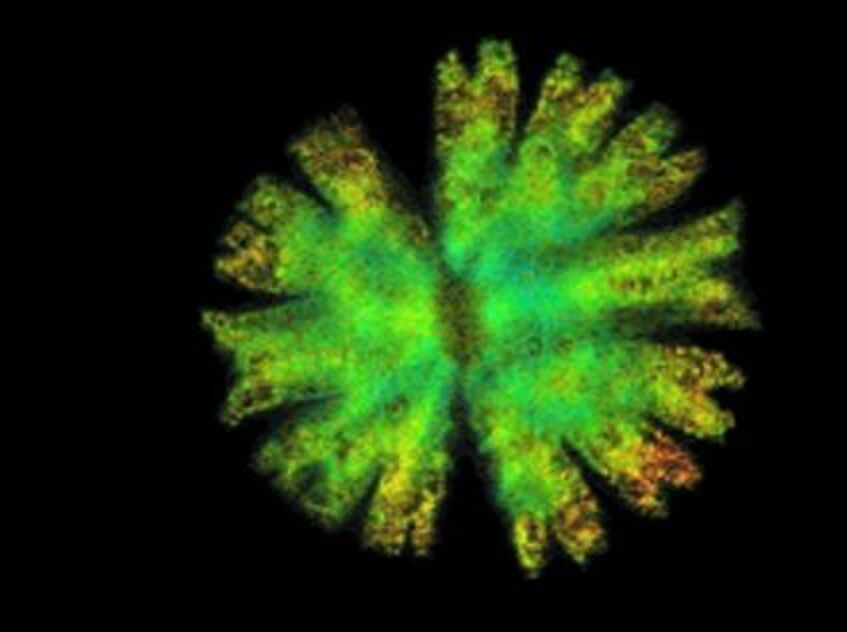
Structure and function of carnivorous plants
Carnivorous plants supplement their mineral nutrition by absorbing different species of nitrogen, phosphate, potassium, trace elements and small organic compounds from animals. For this aim, they have developed trap organs that carry glandular cells producing trapping mucilage and digestive enzymes. Also nutrient uptake often occurs via gland cells. Specific transporters serve for uptake into glandular cells of trap organs. Commonly, nutrients are engulfed by endocytosis. Yet, many questions still remain with respect to, for instance, morphology and anatomy of the traps, structure of the glandular systems, the production of attractants and signaling, the production of digestive enzymes, the uptake of digested proteins or the movement of leaves upon signals from animals.
Supervisor: Irene Lichtscheidl

Do microstructures play a role in speciation of fungi?
Is the development of microanatomical structures like cystidia and incrusted pileipellis hyphae correlated with speciation? This question will be addressed using Clitopilus cystidiatus versus C. prunulus as study system. To this end, light and electron microscopical investigations and molecular genetic research (DNA barcoding) will be used.
Supervisors: Irmgard Greilhuber & Michael H. J. Barfuss
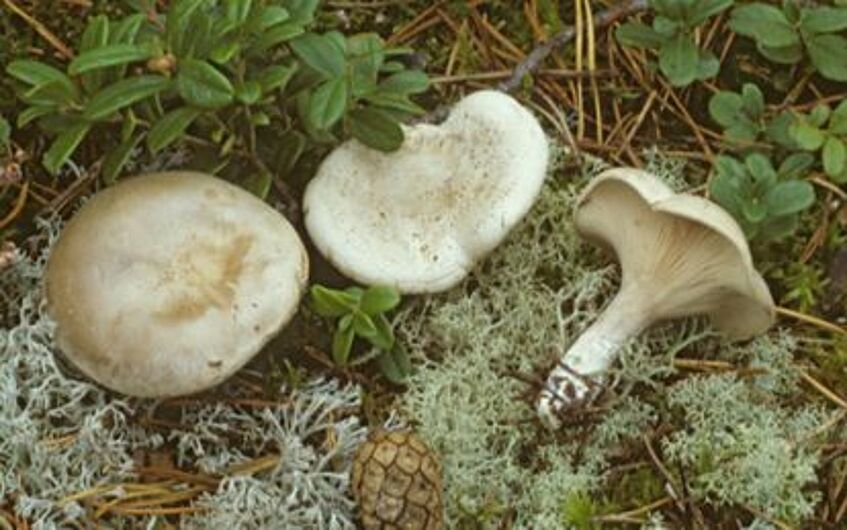
The world of shape evolution in flowers
Explore the world of shape evolution in flowers. When flowers change their pollinators, they often change their colour and scent, but also their shape. Unlike changes in colour and scent that are simple and well-studied, changes in shape are much more complex and poorly known. We have assembled a dataset on the flowers of Erica from Europe and the Cape, from species pollinated by bees, birds, and long-tongue flies. Our shape analysis shows for the first time that the structure of flowers shape (what varies with what) is completely different for flowers pollinated by bees vs. those pollinated by birds, vs. those pollinated by flies. The aim of this project is to gather some more data on selected species of Erica to reconstruct how shape structure evolved in this genus via phylogenetic methods.
Supervisor: Yannick Städler
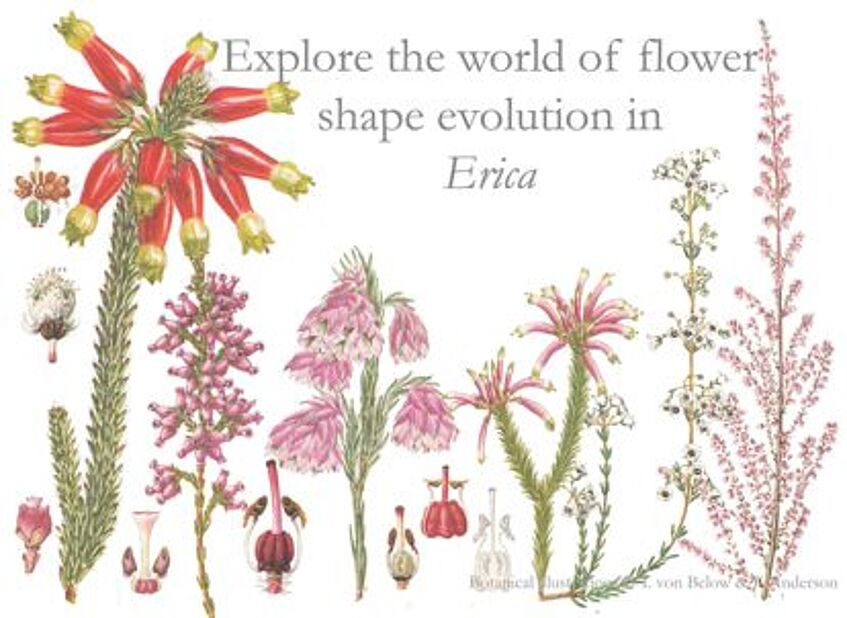
Ecological divergence between two tetraploid orchid lineages
Whole genome doubling and hybridization profoundly shaped plant genome evolution. However, to be successful, first generations allopolyploids must quickly adjust their genome and function, thereby altering their ecological properties and adaptive success, as a function of their environment. The duplicated nature of polyploids provides genome-wide opportunities for adaptive evolution. This project will investigate in detail the ecological divergence between two orchid tetraploid lineages (Dactylorhiza), focusing on two components: edaphic (soil chemistry) and climatic (temperature data collected with loggers planted within wild populations). Further, the molecular relevance of this divergence will be investigated at the level of expression of selected genes within individuals from natural populations and from reciprocal transplantations.
Supervisor: Ovidiu Paun
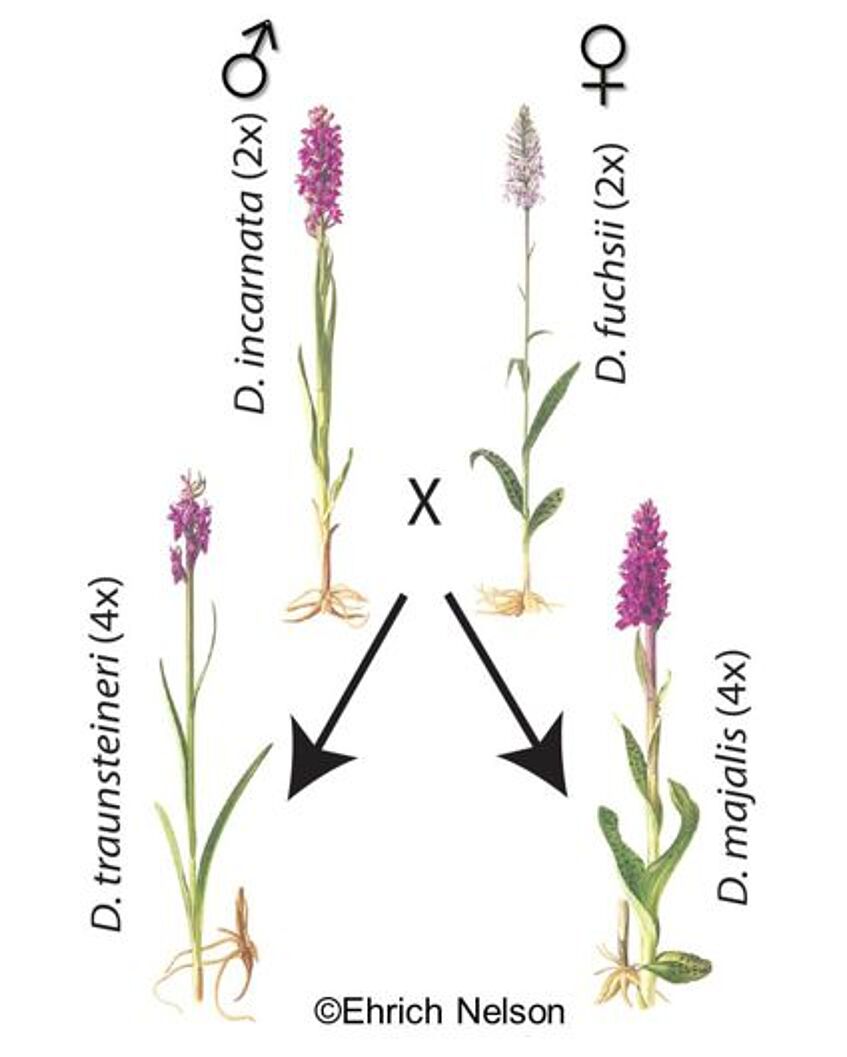
Structural change of stamens related to the age of flowers in buzz-pollination systems
Buzz-pollination is a plant strategy promoting pollen transfer by requiring pollinators (mostly bees) to vibrate a flower's stamens in order to extract pollen. Although this is a wide-spread pollination system, little is known about the role of plant traits (mechanical properties of stamens) in mediating vibrational properties of buzzes and in pollen release. The main goal of this project is to test a hypothesis claiming that the properties of an individual flower change during the course of anthesis and thereby alter the pollen release patterns over time.
Supervisors: Jürg Schönenberger, Maria von Balthazar & Agnes Dellinger
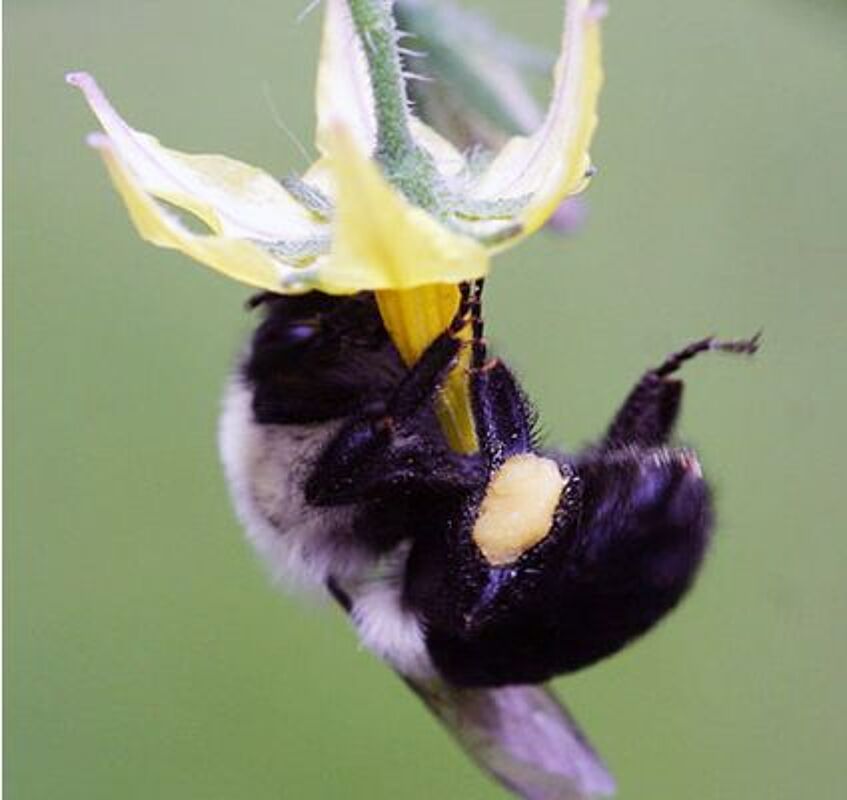
Pollen in honey and dust and their use in forensics
Palynology is a basic field in science and serves as an essential tool for many scientific disciplines, such as plant systematics, melissopalynology, forensic palynology. In this project, pollen in honey and dust will be investigated with regard to forensic questions. Basic knowledge in Palynology is required.
Supervisor: Martina Weber
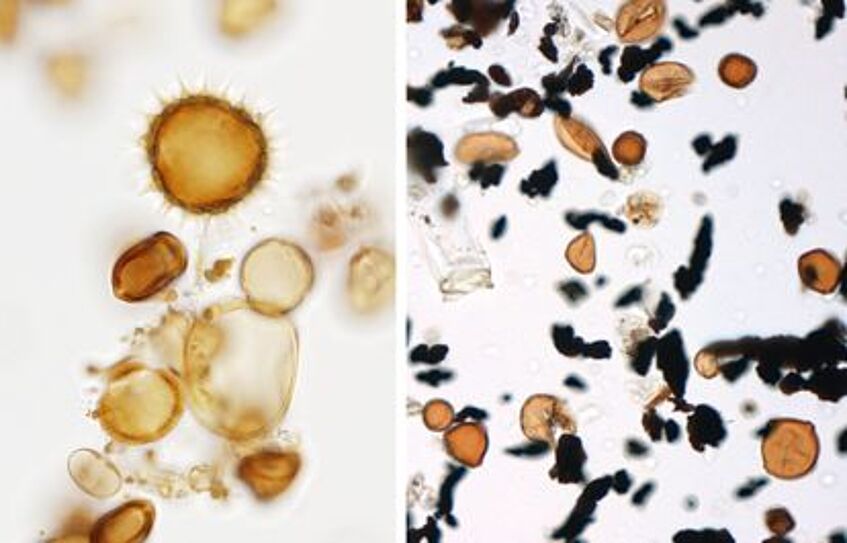
Plant adaptation along an elevational gradient
Plant adaptation along altitude is an evolutionary and ecologically interesting process, and offers a highly relevant model to understand plant responses to climatic changes. The ecological parameters that differ along altitude may include apart from average temperatures, also distinct day-night temperature amplitudes, light and moisture regimes, together with a different biotic environment. Plant responses to such wide-ranging ecological difference will comprise plastic, epigenetic and genetic components, but their extent and ecological relevance are still not well understood. Using transcriptomic tools this project will investigate the molecular basis of ecological divergence between mountain and alpine ecotypes of Heliosperma pusillum (Caryophyllaceae) in SE Alps.
Supervisor: Ovidiu Paun
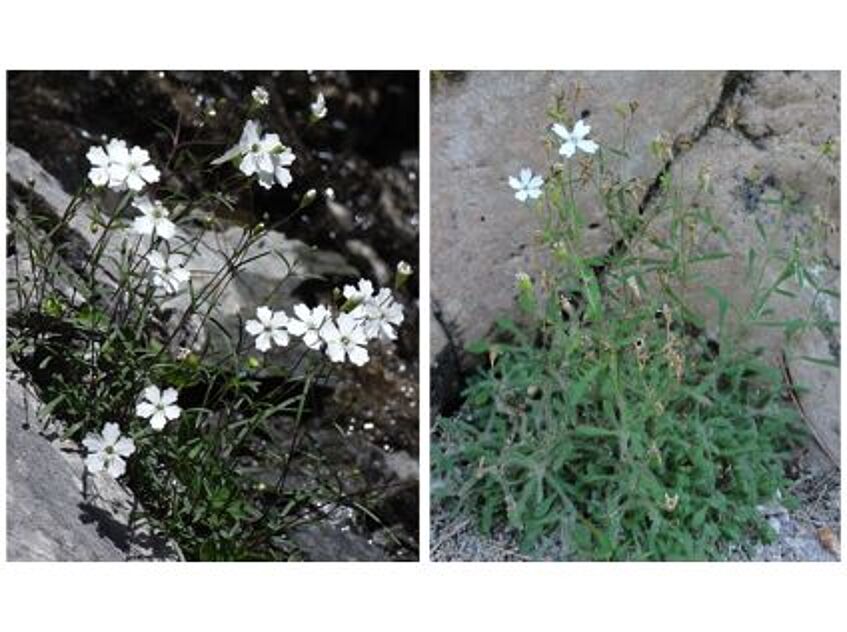
Chromosomal and genome size evolution in plant diversification and speciation
This project will involve analyses of chromosome numbers, karyotype structure, incidence of polyploidy and genome size in a group of closely related species/populations. The methods to be used include chromosome staining (Feulgen staining), flow cytometry (with propidium iodide), karyotype and ideogram construction, light microscopy, and if justified also 35S and 5S rDNA mapping in chromosomes of selected individuals via fluorescence /in situ/ hybridization (FISH). The scientific questions addressed within this project concern the trajectories of evolution of chromosome numbers and structure as well as genome size accompanying diversification, speciation and/or polyploidization.
Supervisor: Hanna Weiss-Schneeweiss
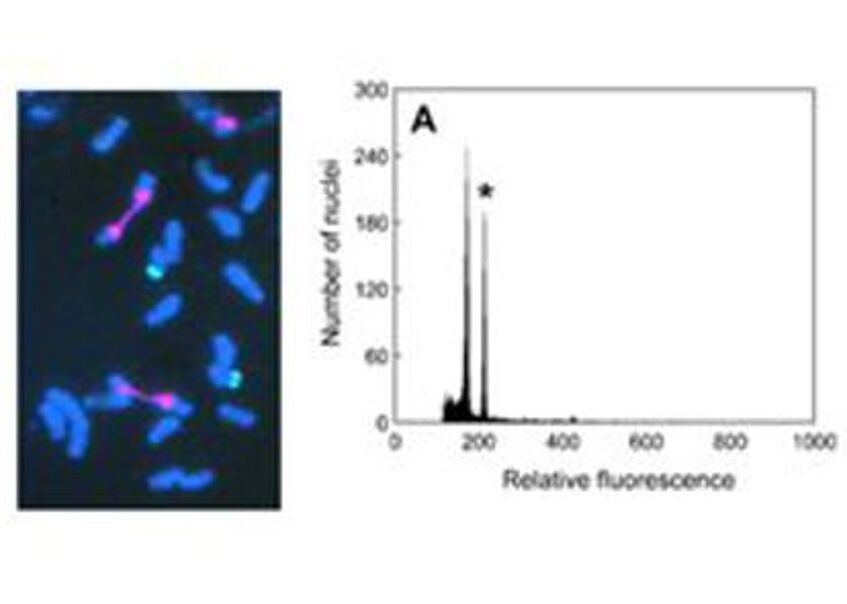
Structural traits in leaf domatia of Melastomataceae
In many genera of the tribe Miconieae (Melastomataceae) species develop leaf pouches (domatia) which are occupied by ants (Clidemia, Conostegia, Henriettea, Maieta, Ossaea, Tococa). The ants have a significant anti-herbivorous effect and in return the host-plants receive nutrients from debris stored in the domatia. This project deals with the structural traits of the domatia from different genera (Clidemia, Tococa, Maieta). The morphology and anatomy of the leaf lamina and leaf pouches will be analyzed with SEM, CT and sectioning. The aims are: (1) to highlight their differences and similarities; (2) to highlight the anatomical difference between leaf lamina and domatia; (3) to verify whether the domatia, despite being from different plant species, show a structural convergence linked to their specialized function in the mutualisms with ants.
Supervisor: Veronika Mayer
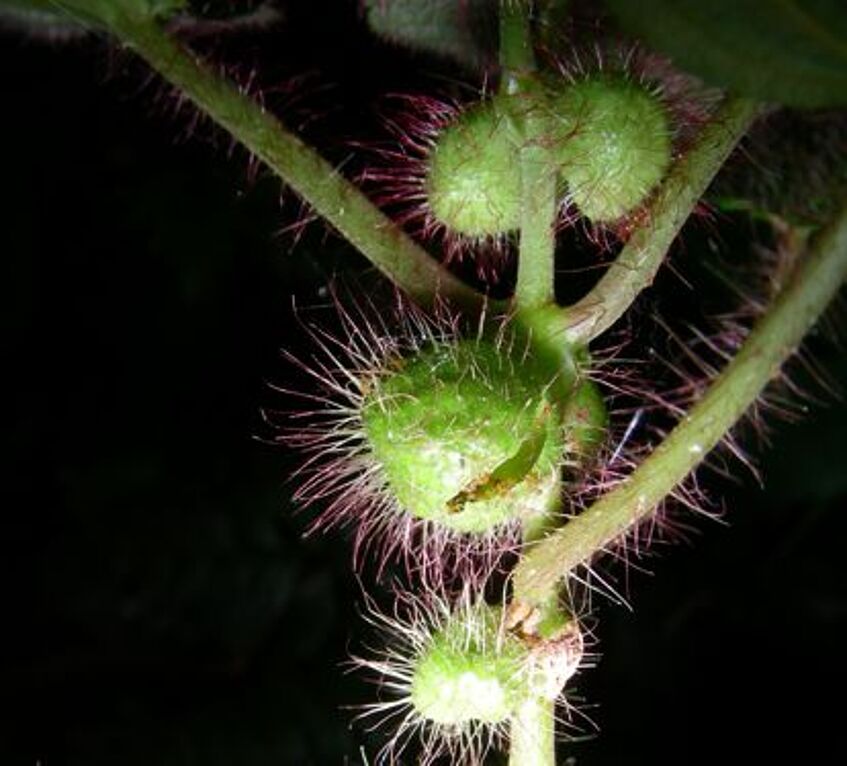
Influence of Zn(II) atmospheric deposition on different genotypes of the moss Atrichum undulatum
Environmental contamination is a major challenge of our time. Here, we focus on the moss Atrichum undulatum and simulate atmospheric deposition of zinc. Zinc tolerance will be analysed by the intracellular localisation of zinc on the microscopic level as well as by chromosome number and genome size using flow cytometry and classical cytology.
Supervisors: Ingeborg Lang & Hanna Weiss-Schneeweiss
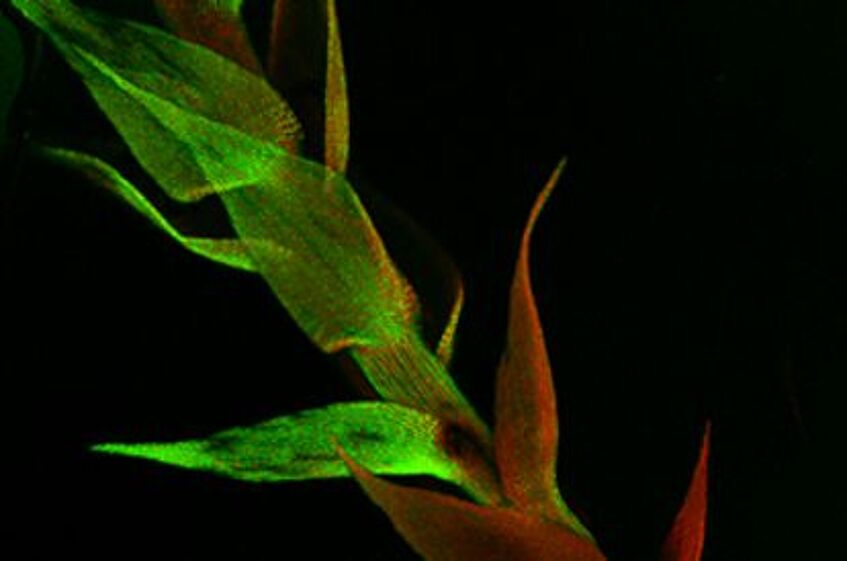
Molecular phylogenies as tools to understand structural evolution
Understanding structural evolution usually requires the availability of a sound phylogenetic framework. Hence, this project involves the generation and/or analyses of molecular phylogenetic data as well as the sampling and/or analyses of morphological/structural data within the thus established phylogenetic framework.
Supervisor: Gerald Schneeweiss
